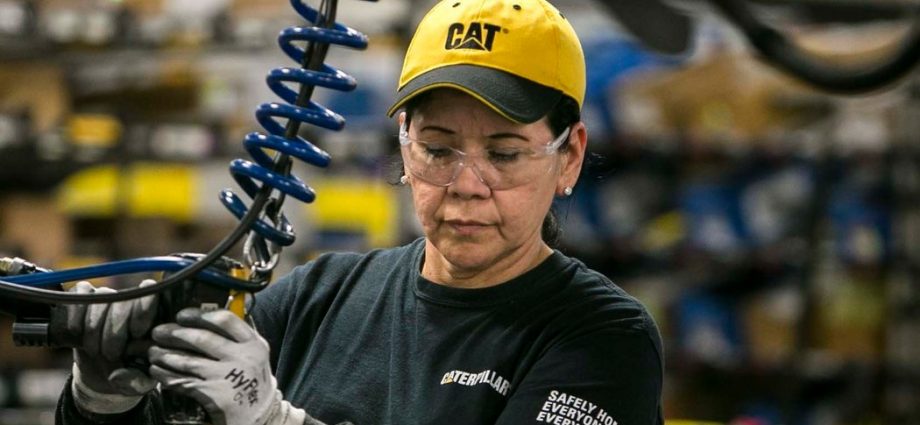The September jobs numbers have something for everybody.
Say you’re a president about to run for re-election and you’re looking to boast about the fantastic economy. Good news! The unemployment rate fell to 3.5 percent, the lowest in nearly five decades. The drop, from 3.7 percent, occurred for good reasons — more people were working. The share of adults 25 to 54 who are working reached its highest level in more than 12 years.
Or suppose you’re a central banker who is looking for a soft landing for the economy — you want the expansion to continue but in a way that is sustainable given the United States’ demographic realities. Well, the 136,000 jobs added in September are about what you want to see. Over the last six months, employers have created 154,000 net jobs per month, down from 223,000 a month during 2018, which makes sense given the ultralow unemployment rate and slowing growth in the number of working-age adults.
Then again, what if you are a more pessimistic type, and think that the ostensibly strong economy is failing to reward workers, and just may be about to fall off a cliff? You have some ammunition, too!
Worker pay was essentially flat in September — average hourly earnings down a penny, actually. Over the last year, average hourly earnings are up only 2.9 percent — weaker than the 3.2 percent gain reported for August and well down from the 3.4 percent rise in the year that ended in February.
The evidence is now compelling that wage growth is decelerating, not accelerating. That is a very surprising thing to see given the ultralow unemployment rate. Things are supposed to work the other way around. The entire framework for mainstream economic policymakers is that a tight labor market leads employers to bid up wages; higher growth in wages then fuels broader economywide inflation. But in 2019, at least, that first step doesn’t appear to be happening.
Meanwhile, the details of which industries are adding or shedding jobs reinforce the notion that major parts of the American economy are in trouble.
The manufacturing sector shed 2,000 jobs. One month’s numbers can be erratic, but over the last six months the sector has added an average of only 3,000 jobs a month, down from 22,000 a month in 2018. America’s factories are slowing down, reflecting a slumping global economy and the escalation of trade wars.
If anything, a report earlier in the week showing the steepest rate of contraction in the manufacturing sector since 2009 suggests that the manufacturing employment numbers will get worse before they get better.
An even bigger loser in September was the retail industry, which lost 11,000 jobs — its eighth month in a row of contraction. That surely reflects its particular challenges, particularly a wave of bankruptcies and store closings. But it is worth watching in case retailers, through their hiring decisions, are sending a signal about their expectations for consumer spending.
Notably, 22,000 of the net new jobs in September were with the government — primarily state and local government employers. That suggests private sector job growth was even weaker than the headline numbers imply, also consistent with a global economic slowdown.
So where do all these competing signals leave us? Where does someone who is neither a president seeking re-election, a central banker seeking steadiness nor a stone-cold pessimist conclude that things stand?
The slowing wage growth paired with low unemployment is a genuine conundrum. It should make the Federal Reserve even more skeptical of the theoretical relationships between jobs, wages and inflation that have traditionally driven its policy choices.
In particular, the longer the United States carries on with sub-4 percent unemployment with no negative consequences, the stronger the case for testing just how low things can go.
But the rest of these results are not particularly surprising, nor inconsistent with one another. Slower job growth is nothing to mourn if it takes place as the economy inches closer and closer to full employment. And that it is taking place with continued gains in the share of prime-age adults working means the job market is still going in the right direction, at least in terms of creating jobs.
There may yet be a more significant slowdown or even a recession in the months ahead, but the good news is that it certainly isn’t here yet.

